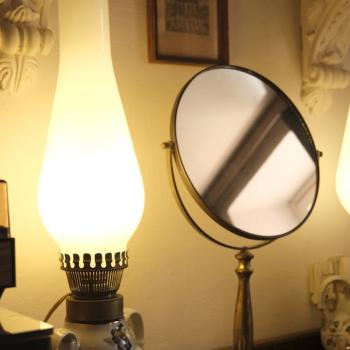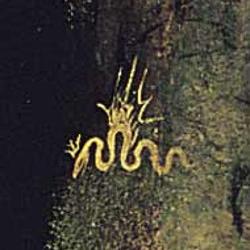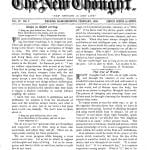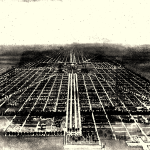Thanks to Tickletext for this great quotation from the Christian abstract artist Makoto Fujimura:
I’ve heard many people say of contemporary art: “my kids can do that.” I encourage them, then to try it themselves, don’t let kids have all the fun! Try to make drip paintings like Jackson Pollock. Or paint an object with encaustic, layering color upon color, like Johns. Try silk screening images like Warhol. You soon find out that in the ordinary gestures and materials, there are deceptively complicated and sublime twists. Our drips become unnatural and confined, where as Pollock’s drips dance, and form delectable edges that seem to undulate in front of our eyes. Our edges of encaustic strokes become unshapely, because If you try working with wax (as I have tried to in college,) you find out soon enough that it is unforgiving, making it very difficult to create a clean, sharp definition. The melting wax constantly oozes, and moves about, and the colors muddle. If you are finally able to paint a stripe with bright colors, the stripes would not resonate, in ways that Johns’ Flags do.
What’s the source of that quote, Tickletext? You may recall
this post and
this post about Fujimura.
The fact is, from a strictly literal Biblical point of view, abstract art–that is, non-representational art–may be less problematic than the realistic art that most Christians prefer today. The Commandment forbids making “any likeness of anything that is in heaven above, or that is in the earth beneath, or that is in the water under the earth” (Exodus 20:4). It was paganism–and in particular, in our Western heritage, the pagan Greeks–who stressed that art has to be imitation; that is, a “likeness” of something.
The prohibition of likenesses by no means prohibited art. But the art it inspired was non-representational or abstract, art that depicted no likeness of anything in heaven or on earth or in the water. Pottery of the ancient Hebrews tended to feature complex geometrical designs. Pottery of the Canaanites featured deities, animals, and fish.
Now I don’t think the Biblical prohibition of likenesses DOES altogether forbid realistic art. The point of the Commandment is not to “bow down” to such images. Later in Exodus God commands the use of realistic art–such as representations of angels and pomegranates in the Tabernacle, with lions and palm trees adorning the Temple–so the Bible in principle allows for such things. But still, non-representational art is non-controversial at all according to the Bible. (For good examples of how beautiful such art created in the shadow of the prohibition of images can be, look at Islamic art such as Persian carpets.)
I get into all of this in my book State of the Arts.












